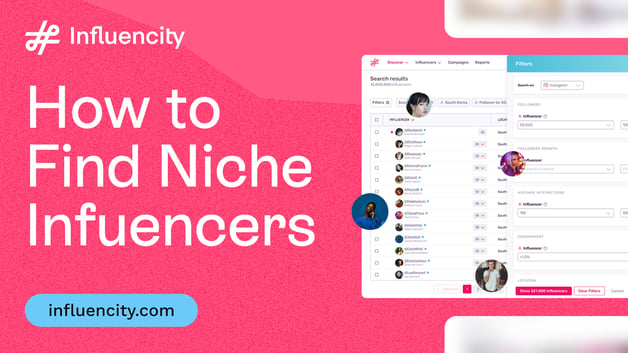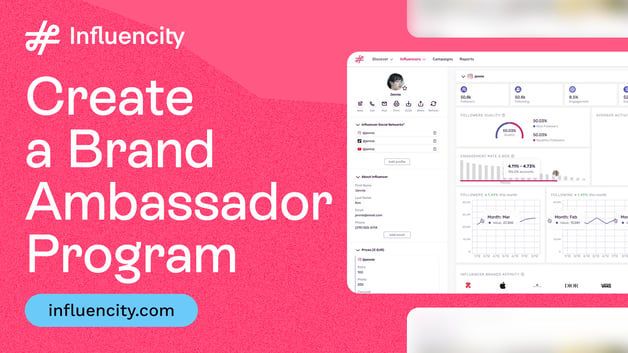Social Listening
How to Use Sentiment Analysis and Influencer Analytics to Improve Your Influencer Campaigns
Social Listening
Influencer marketing is one of the most powerful ways to build emotional connections with audiences—but to really win, you need more than reach and clicks. You need to know how people feel.

With the right tools, agencies and brands can do more than just track engagement—they can understand how people truly feel about their campaigns. Sentiment analysis is key to unlocking this deeper layer of insight.
When paired with influencer analytics tools, sentiment analysis empowers teams to find the right creators, monitor audience reactions in real time, optimize content, and prove real business value.
In this article I’ll walk you through how to use sentiment analysis and influencer analytics tools to:
- Find the right influencers
- Monitor emotional responses in real-time
- Optimize messaging and product placement
- Avoid PR crises
- Prove ROI with more than just vanity metrics
Sentiment Analysis in Influencer Marketing
Sentiment analysis uses natural language processing (NLP), AI, and machine learning to assess how people feel about a brand or campaign. It decodes tone, emojis, and even sarcasm in comments, reviews, and captions to categorize sentiment as positive, neutral, or negative.
This information is extra valuable because it will help you optimize your campaigns in real time, vet influencers beyond follower count, identify emotional trends in your market and yes, spy on competitors (the legal, ethical way).
Let’s clear something up right away — sentiment analysis isn’t a new thing. In fact, it’s been around for decades (shoutout to the early 2000s researchers doing the heavy lifting). But what makes it exciting now is how far it's come — especially in influencer marketing.
We know this to be true: people feel before they think. Emotional reactions to content are instant, and often more powerful than any rational decision-making. That’s why, in the influencer world where authenticity and connection matter more than ever, sentiment analysis is just another tool you need to master to excel.
What Exactly Is Sentiment Analysis & Why It Matters for Influencer Marketing
As someone who lives and breathes content strategy, I can’t stress this enough: sentiment analysis helps you read between the lines. It dives into the emotional tone of comments, captions, shares — even emojis — and tells you what your audience is really thinking, to categorize audience reactions.
What You Can Actually Do With Sentiment Data
1. Enhance Your Content Strategy
We once ran a campaign for a lifestyle brand where two influencers posted nearly identical content — one got glowing comments like “love this vibe!”, and the other... well, let's just say it wasn't so well received.
Thanks to our social listening tool, we quickly adjusted the brand’s messaging to lean into the tone that resonated, not just performed.
Pro tip: Check sentiment trends weekly during a campaign and adapt your visuals and tone of voice accordingly.
2. Optimize Product Placement
Sometimes it's not what you say — it’s how you show it. We’ve seen cases where simply repositioning a product in an influencer’s video (from background prop to central focus) dramatically shifted sentiment from “meh” to “need this now!”
@makeupbyleeamarie Let's unbox some pr together 😊 Should we do more videos like these?! 👀 #prunboxing #unboxing #beautyinfluencer #contentcreator #makeupinfluencer #influencerlife #beautycontentcreator ♬ original sound - Leea Marie | Content Creator
Tip: Use sentiment data to A/B test different placements and formats (unboxings vs. casual mentions, for example).
3. Drive Smarter Marketing Decisions
Sentiment analysis doesn’t just help your social team — it’s gold for the entire marketing strategy. Are people excited about your new drop? Confused about pricing? Thrilled by a collab? Now you know — and you can act on it.

Real-world win: One client paused a rollout mid-campaign because sentiment flagged confusion about product use. A quick how-to post turned it around and boosted conversions.
4.Understand Audience Behaviour
This goes beyond positive vs. negative — it’s about why people respond the way they do. It helps you see patterns, spot early warning signs, and predict what will (or won’t) work next.
Bonus: Use this insight to brief your influencers better — when they understand your audience's mindset, they create stronger content.
5. Refine Influencer Collaborations
We’ve had brands discover that their best-performing influencers weren’t the ones with the most followers — they were the ones generating the most positive sentiment. Sentiment analysis helps you identify those hidden gems and build partnerships that actually move the needle.
Quick tip: Include sentiment performance in your post-campaign influencer evaluations — not just reach or clicks.
So, Why Do You Need Sentiment Analysis in Your Toolbox?
At Influencity, we see sentiment analysis as the emotional gut check your campaigns need. It’s not about replacing your current metrics — it’s about completing the picture.
Use it to:
- Understand how audiences emotionally react to influencer content
- Validate if your brand voice is landing the way you intended
- Spot disconnects early before they turn into bigger problems
- Align with influencers who truly connect with your community
In the end, people don’t just remember ads — they remember how those ads made them feel. Sentiment analysis helps you make sure those feelings are the right ones.
Sentiment analysis takes you beyond surface-level stats and gives you the emotional context you need to create campaigns that truly connect. Using social listening tools you can:
1. Use Influencer Analytics to Find the Right Match: Vet Influencers Before You Commit
A high follower count doesn’t guarantee engagement or positive brand sentiment. That’s where influencer analytics tools come in—they go beyond surface-level metrics to identify creators who truly resonate with their audiences.
Before signing a new creator, dive into the sentiment around their past collaborations. Are their followers engaged, supportive, and aligned with your values? Or is their comment section a red flag waiting to happen? Monitoring their digital footprint helps you choose influencers who amplify your brand—not complicate it.
Key Metrics to Look for:
- Engagement rate – Are followers actively interacting with content?
- Audience demographics – Do followers align with your target market?
- Authenticity score – Are followers real or inflated with bots?
- Past brand collaborations – Did their previous campaigns generate positive sentiment and engagement?
Bonus: Look at the tone of comments and content feedback. High engagement is good, but positive sentiment is better.
2. Optimize on the Fly
Selecting influencers is just the beginning. As your campaign runs, the smartest brands continuously monitor performance—and most importantly, audience sentiment.
Is your campaign striking the right tone, or are people rolling their eyes in the comments? Sentiment analysis lets you track brand mentions, conversations, and sentiment across social media and online channels in real time. That means you can pivot fast—tweak messaging, adjust visuals, or respond to concerns before they snowball. No more waiting until post-campaign wrap-ups to fix what's broken.
What to Track During a Campaign:
- Engagement trends – Are posts receiving consistent interaction?
- Traffic & conversions – Are influencer mentions driving results?
- Content type performance – Which formats drive the most positive reactions?
- Audience sentiment – Use sentiment analysis tools to gauge tone and emotion in comments, shares, and replies.
Tip: Spot rising negative sentiment early and adjust messaging or content formats before it impacts performance.
3. Craft More Effective Messaging
When you understand how your audience truly feels, you create messaging that resonates. Real-time monitoring helps you tap into trending topics, hashtags, and emotional reactions, so you can tailor your tone and timing for maximum engagement. Whether you're refining a post or planning a campaign, this emotional insight is your creative compass.
4. Track Your Competitors Like a Pro
Want to know how your rivals are performing and what customers really think of them? Use sentiment analysis and competitive monitoring to keep tabs on their campaigns, audience feedback, and messaging tone. Spot what’s working (and what’s flopping), then adjust your own strategy to stay one step ahead.
5. Monitor Brand Sentiment to Protect and Strengthen Your Reputation
Track the performance of your own campaigns across multiple channels and learn what’s landing, what needs refining, and what’s driving real results.
Even one misaligned post can spark a PR storm. Sentiment analysis tools act as your early warning system, allowing agencies to protect brand image and adapt quickly.
How Sentiment Analysis Helps:
- Detects negative trends early – Stay ahead of issues before they go viral.
- Monitors influencer tone – Ensure creators align with your values and messaging.
- Improves communication strategy – See what type of language and content resonates with audiences.
Tip: Positive sentiment isn’t just a bonus—it’s a strategic KPI that reflects real brand trust and connection.
6. Stay Ahead of Trends and Competitors with Sentiment Insights
Don’t just follow trends—predict them. With the right tool, you can monitor emerging topics, sentiment shifts, and conversations that matter most to your audience.
Staying competitive means knowing what people are feeling—not just what they’re doing.
How Sentiment Analysis Keeps You Ahead:
- Spot emerging trends – Identify emotional responses to new topics or formats.
- Benchmark competitor campaigns – Understand how audiences react to similar messaging.
- Identify rising platforms – Use sentiment data to detect where people are genuinely excited to engage (e.g., TikTok, Threads, BeReal).
7. Use Sentiment Data to Prove ROI and Justify Spend
Executives want to see meaningful results. With sentiment analysis, you can complement quantitative metrics with qualitative proof.
Metrics That Matter:
- Conversions & sales – Are campaigns driving revenue?
- Brand sentiment shifts – Has perception improved after the campaign?
- Customer acquisition cost (CAC) – Is influencer marketing cost-effective?
- Customer LTV – Are influencer-acquired customers more loyal?
Combining hard data with sentiment insights makes your reporting richer, more human, and more persuasive.
Wrapping up: Showcasing your Insights
In other words, we love a good metric dashboard (who doesn’t?), but data without emotion is only half the story. Keep in mind that:
Influencers Are the Messengers — Sentiment Tells You If the Message Landed
Think of it like this: brands use advertising to speak, and influencers are the messengers carrying that message. But how do you know if what you’re saying actually hits home?
Of course, we have the classic metrics:
- Engagement rates
- Clicks
- Sales
They’re valuable, no doubt. But they don’t always tell you how people are reacting. Did your audience feel inspired? Confused? Offended? Delighted? That’s where sentiment analysis steps in.
Emotions Drive Action — Sentiment Analysis Captures Them
One of the best things about sentiment analysis is that it taps into something your numbers can’t: emotional feedback. It gives you a real-time look at how your audience feels about your influencer partnerships, messaging, or product positioning.
We’ve seen influencer campaigns with decent numbers but flat emotional impact — and that’s a missed opportunity. On the flip side, we’ve seen smaller influencer activations drive massive brand love thanks to a perfectly aligned tone and message.
How Sentiment Scores Work (Don’t Worry, It’s Not Too Mathy)
Understanding the numbers behind the analysis helps you make smarter decisions. Here are two simple methods often used:
Method 1: Ratio of Positive vs. Negative Words
Good for long-form content like reviews.
Formula: (# negative words – # positive words) ÷ total words = sentiment score
This gives you a scale of emotional weight across a single piece of text.
Method 2: Positive/Negative Word Ratio
Better for big datasets like comment sections or hashtags.
Formula: # positive words ÷ (# negative words + 1) = sentiment score
A score of 0 = neutral. Higher = more positive. Lower = more negative.
I’ve seen this work brilliantly in post-campaign wrap-ups where a client wants to know not just how many people reacted — but how they felt.
Understanding the Sentiment Analysis Overview
Now, let’s talk about how you can interpret the insights you’ve gotten from a sentiment analysis.
Positive Sentiment Percentage
This one’s your green light — it tells you when your content is actually landing well.
A beauty brand we worked with saw a spike in positive sentiment after an influencer shared a behind-the-scenes look at how the product was made. Not only were people excited — they trusted the brand more. Win-win.
Use case: High positive sentiment? Double down on that content style or creator.
Neutral Sentiment Percentage
Neutral doesn’t mean bad — it often means informational. People are watching, maybe even liking, but not quite feeling strong emotions about it.

Think product launch posts or announcement carousels. They're necessary — but maybe they could use a bit more personality or storytelling to really pop.
Tip: If neutral sentiment is high, test out stronger calls to action or more engaging formats (like Reels or Q&As).
Negative Sentiment Percentage
This is your early-warning radar. Maybe people didn’t like the tone, had a bad product experience, or the content just didn’t click.
We had a campaign where an influencer's post was visually beautiful — but the caption felt a bit tone-deaf. The spike in negative sentiment told us to pivot fast. A new post, new message, and... crisis averted.
Don’t panic. Look for patterns in the feedback and adapt quickly.
Understanding these sentiment layers helps you make content that does more than perform — it connects. At Influencity, we look at sentiment scores in every campaign. It helps us fine-tune messaging, choose the right creators, and avoid missteps before they happen.
How to Integrate Sentiment Analysis Into Your Influencer Campaigns
We’ve talked about why sentiment analysis matters. But here’s the real magic: it shines brightest when integrated throughout your entire influencer marketing campaign. Let me show you how we do it at Influencity.
1. Pre-Campaign Planning
This is where it all begins — and where sentiment can help you set the tone (literally).
Find the right key opinion leaders
Sentiment tools let you look beyond the numbers. Sure, an influencer might have millions of followers, but what’s the vibe in their comments? Do they generate trust? Excitement? Or... controversy?
We once avoided a major mismatch for a wellness brand after seeing that an influencer’s audience had a history of skepticism and pushback on product posts. That’s the power of sentiment insights.
Adjust your messaging before launch
Dig into your past campaigns (and your competitors’) to see what kind of language lands well. Are your product claims sparking joy or raising eyebrows?
Tip: Use this phase to test tone, taglines, or even hashtags with small focus groups or micro-influencers.
2. While the Campaign is Running
This is your live performance — and you want real-time feedback.
Monitor sentiment in real time
We love watching sentiment trends roll in as content goes live. Did a post hit a nerve (in a good way)? Great — amplify it. Is something off? Pivot. Fast.
Track brand mentions + audience mood
Automated alerts help us keep tabs on both branded content, hashtags and general chatter. But what we care about is how people are talking — and that’s where sentiment comes in.
Cam’s reminder: Not all virality is good virality. Sentiment keeps you one step ahead of any potential misfire.
3. Post-Campaign Analysis
Here’s where the learning happens — and where sentiment can unlock the why behind the numbers.
Measure more than just reach
Look at how people felt throughout the campaign. Did the tone shift? Were people more positive after a certain influencer joined?
Pro tip: Don’t just focus on the highs. Negative feedback is gold when it comes to improving your next strategy.
Use sentiment to plan your next big thing
What themes triggered excitement? Which messaging fell flat? That’s your playbook for the next round.
5 Real-Time Sentiment Analysis Examples That Can Level Up Your CX
If there’s one thing I’ve learned in content and brand strategy, it’s this: if you don’t understand how your audience feels, you don’t really understand your audience.
Customer sentiment is a direct line into your users' thoughts, frustrations, and emotional responses.
1. Social Media Sentiment Engagement Beyond the Likes: Peloton’s “Bike Guy” Ad
Social media is the pulse of public opinion, especially when you’re running influencer or values-driven campaigns. You don’t have to guess how your audience feels — they’re literally telling you in the comments.
Say you’ve got an influencer rolling out a product on Instagram. Comments might look good on paper — but are people hyped or just tagging friends to laugh at it? Real-time sentiment tracking helps you cut through the noise and see what people are really saying.
Remember that awkward Christmas ad by Peloton with a bike guy? It missed the mark hard — and the internet let them know. If Peloton had applied sentiment analysis to early audience tests, they might’ve seen the tone didn’t land and saved themselves a PR headache.
2. Instant Customer Feedback: Know How You're Really Doing? A Telco Turns Frustration Into Loyalty

You don’t have to wait until a campaign ends to find out how it’s landing. With sentiment analysis, you can process massive amounts of customer feedback the moment it rolls in.
Let’s say you’re launching a collab and the DMs start filling up with “Where’s my order?!” — that’s a signal. Real-time sentiment tracking can flag those early red flags so you can get ahead of problems, whether that means jumping into your customer service queue or tweaking your communication strategy.
Let’s be real — no one likes calling customer support. And if that experience goes south, customers might not say it... they’ll just bounce.
That’s why one mobile carrier turned to customer support sentiment analysis to proactively reduce churn. They transcribed and analyzed every support call. If a customer's sentiment score dropped below a certain level, the system automatically sent out a follow-up apology and flagged the account for retention actions.
The result? Better customer conversations, targeted promotions for at-risk users, and improved CSAT scores.
Pro insight: Negative feedback often hides in plain sight. Spotting patterns quickly is how brands turn near-misses into opportunities. And as keep in mind that sentiment analysis doesn’t just work for marketing — it’s a CX powerhouse when used across support, sales, and product teams.
3. Crisis Management. Catch the Storm Before It Hits: Nike’s Bold Move with Kaepernick

We’ve all seen it — one bad post, a misunderstood campaign, or a misaligned influencer partnership can go south fast. The good news? Real-time sentiment analysis can give you a head start on damage control.
Monitoring emotional trends around your brand, you can identify negative sentiment spikes before they blow up. Addressing issues quickly (and transparently) shows your audience you’re not just listening — you care.
In 2018, Nike backed NFL player Colin Kaepernick after he famously took a knee during the national anthem. It was a bold campaign moment, and public opinion split fast. Hashtags like #boycottNike were trending, but so was #justdoit — and Nike needed to understand which sentiment was winning out.
Using tools like ours, Nike analyzed social sentiment in real time. The initial spike in negative feedback was replaced by long-term gains in positive sentiment and increased purchase intent, especially among younger, values-driven audiences.
Key Takeaway: Sentiment analysis doesn’t just help you survive risk — it can help you own the moment and build brand loyalty through it.
4. Sentiment-Driven Content Strategy: Make More of What Works, Good Work Duolingo!
Sentiment data tells you what sort of content is worth amplifying. Let’s take Duolingo as a classic example. They leaned hard into humor after noticing users responded with overwhelmingly positive sentiment to funny content.
@duolingo people have begun to uncover my plan… @FilmTheory #duolingo
♬ original sound - ⭐️
Today, they’re TikTok royalty with 4,6M followers and some of the most engaging, brand-relevant content in the space.
Your move? Use sentiment trends to guide your content tone, format, and frequency. If memes work, lean in. If your audience loves transparency or education, double down. Real-time sentiment analysis gives you the confidence to back creative decisions with data.
5. Personalization at Scale: How WatchShop Used Sentiment Analysis to Make Customers Feel Seen

People don’t just remember what you sold them — they remember how you made them feel. In influencer marketing, personalization isn’t just a nice touch — it’s your competitive edge. And sentiment analysis is how you unlock it.
Every comment, review, support chat, and social post your audience leaves is full of emotional data. WatchShop, a leading ecommerce retailer, tapped into that goldmine by using sentiment analysis to personalize the customer experience at every touchpoint.
Here’s how they did it:
- They analyzed real customer feedback — from product reviews to support tickets — to understand how people felt about their online experience.
- When sentiment dropped below benchmark, they didn’t guess. They dug into the “why” and made real improvements to product pages, checkout flows, and return policies.
- They followed up with A/B testing to validate changes — not just based on what people did, but on what they felt.
The result? A 10% increase in conversions and a customer journey that felt more personal, more intuitive, and more human.
Bonus tip: This kind of emotional personalization is even more powerful across international markets. Tools that localize sentiment insights help you keep tone, language, and cultural nuances spot-on — so whether you’re talking to Paris or Perth, you still feel like you.
Choosing the Right Sentiment Analysis Tool
To determine what’s the best sentiment analysis tool for you agency or brand, start by asking yourself:
- Who’s your audience? Are they chatting on TikTok, writing G2 reviews, or dropping feedback in support chats?
- What are you trying to improve? Is it brand perception, onboarding experience, or post-sale support?
- Which tools match your data sources? Pick platforms that work with your primary channels (social, CRM, email, etc.).
Why Influencity? Okay, We’re a Little Biased... But Hear Us Out
At Influencity, we integrate sentiment insights across the entire influencer lifecycle — from scouting the right creators to post-campaign wrap-ups that actually make sense (and don’t end in 47 open Chrome tabs).
And yeah, we might be a little biased... but if you're serious about building a customer-first influencer strategy that doesn’t just look good in a slide deck — it actually works — then we’re your people.
Numbers don’t lie — let your data tell the success story. We help you stop guessing and start knowing what works for your brand with a suite of smart, scalable features:
Brand Health: Track real-time conversations around your brand, products, and even your leadership team — all filtered by sentiment and emotion (because tone does matter).
PR & Content Marketing: Get hyper-targeted insights based on interests, affinities, and yes, even fake follower detection — so your campaigns don’t just reach people, they reach the right people.
Market Research: Want to spot trends before they trend? We help you uncover the business-critical stuff — from what’s hot to what’s not — so you always stay two steps ahead of the competition.
Competitor Comparison: Think of this as legal stalking. Understand how people feel about your competitors and find those sweet little gaps where your brand can shine brighter.
Crisis Management: The comment section gets spicy? No problem. With custom alerts and granular sentiment analysis, you’ll know before a small spark becomes a PR wildfire.
Campaign Monitoring: Run a campaign and immediately capture how people feel about it. No waiting, no sugar-coating — just honest, emotional feedback you can use.
Sentiment & Emotion Analysis: Because knowing your audience said something is fine. But knowing they said it with love (or sarcasm, or rage)? That’s where we come in.
Influencer Recognition: Find your true brand heroes — not just by follower count, but by real impact. No fluff, just facts (and a few future brand advocates in the making).
Trend Identification: Stay plugged in to shifting behaviors, bubbling conversations, and the next big thing — before your competition even knows what’s up.
Best Practices (and a Few Watch-Outs)
Want to get the most out of your sentiment analysis tool? Here’s what we’ve learned after countless campaigns:
Best Practices
.png?width=800&height=467&name=Frame%2022%20(1).png)
- Set specific goals. Don’t just “track sentiment” — aim to improve positive sentiment by 20%, or reduce negative mentions around pricing.
- Mix it with traditional metrics. Sentiment is powerful, but it’s best served with engagement, clicks, and conversion data.
- Pay attention to nuance. Sarcasm, memes, and slang can trip up tools. Choose one that adapts to evolving language (or has human review options).
- Schedule regular reports. Don’t wait for the end of a campaign. Weekly check-ins keep your strategy agile.
Common Pitfalls
.png?width=800&height=467&name=Frame%2021%20(2).png)
- Relying only on automation. Tools are smart, but people still win when it comes to understanding tone, irony, or cultural references.
- Ignoring neutral sentiment. It may seem boring, but it can point to unclear messaging or missed opportunities to connect emotionally.
- Overlooking intensity. “This is okay” and “this is the worst thing ever” are both technically negative — but they’re not equal. Weight matters.
Final Thoughts: Sentiment Is the New KPI
Metrics show you what happened. Sentiment shows you why. Blending influencer analytics with sentiment analysis, you can create campaigns that aren’t just smart—they’re felt. That’s the kind of marketing that builds brand love.
So, the next time you're reviewing campaign metrics, ask yourself: How did this make our audience feel?
Remember, Feelings First, Metrics Second
In influencer marketing, the emotional response is the performance metric. Sentiment analysis helps us listen more deeply, act more quickly, and make marketing that doesn’t just land — it lasts.
If you’re not already using it to guide your influencer strategy, now’s the time.
Tags:
Sentiment Analysis
Cam Khaski Graglia
Cam Khaski Graglia is the Content Manager at Influencity, where she blends creativity, strategy, and storytelling to craft impactful content. A passionate researcher and lifelong book lover, she thrives on exploring new narratives and shaping engaging brand messaging. Beyond content strategies, briefs, and articles,...







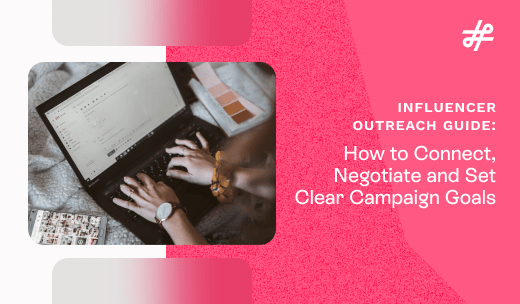









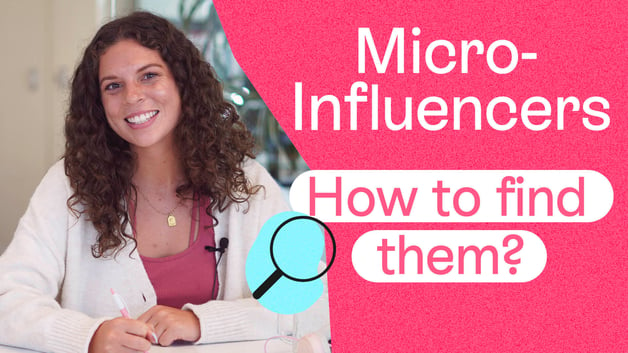


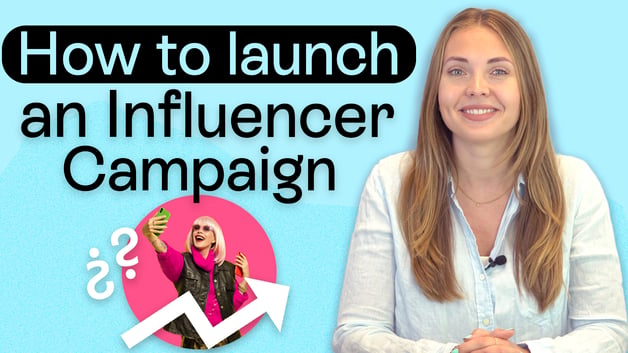

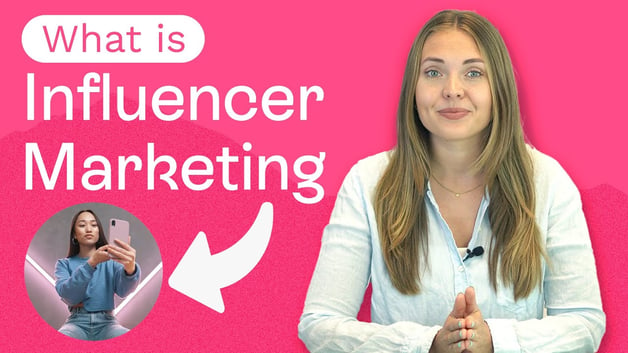

%20and%20How%20Can%20They%20Benefit%20Your%20Brand%20article.jpg?length=628&name=What%20Are%20Key%20Opinion%20Leaders%20(KOL)%20and%20How%20Can%20They%20Benefit%20Your%20Brand%20article.jpg)
